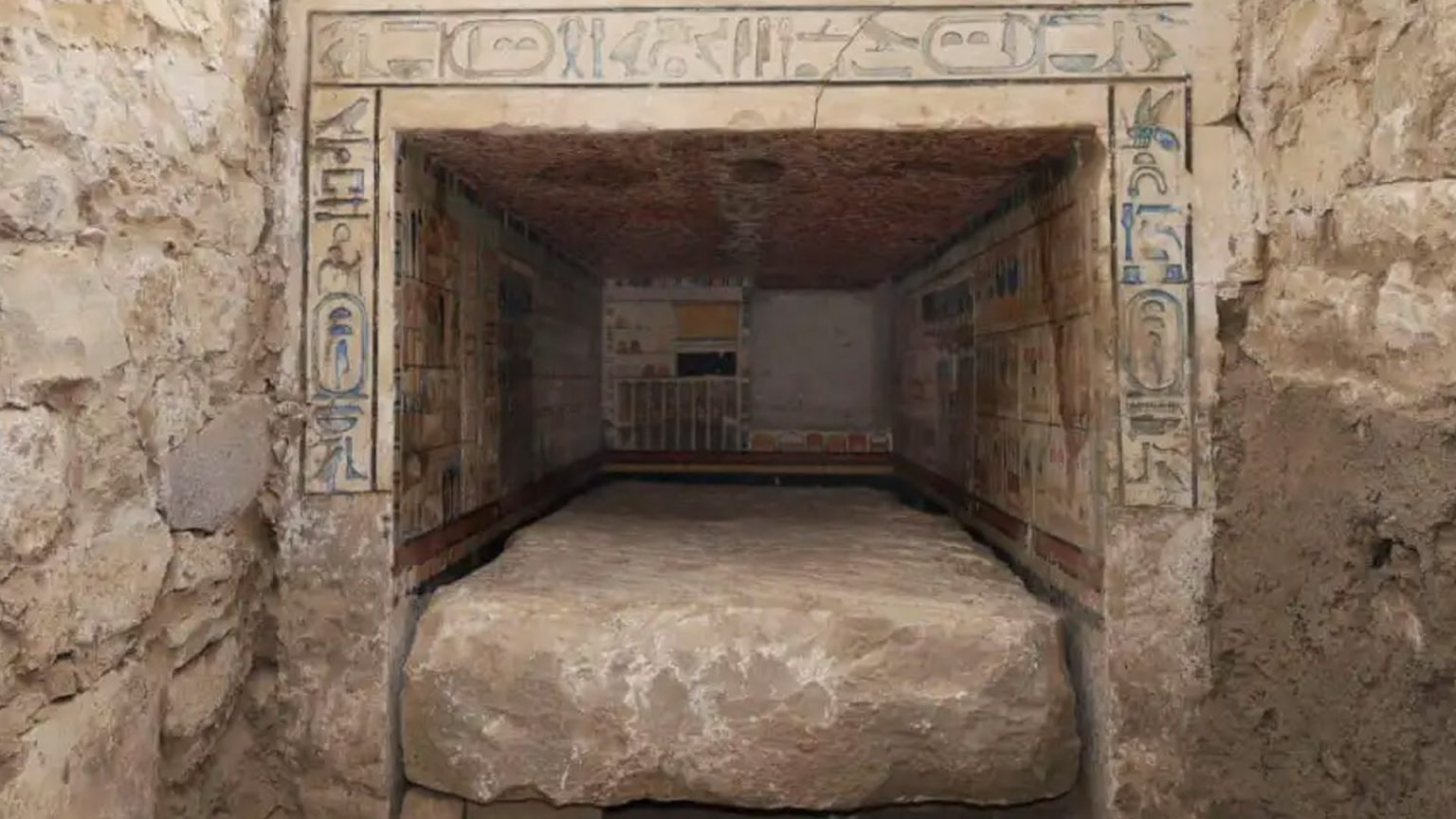The sands of Saqqara, Egypt’s sprawling “city of the dead,” have once again yielded a remarkable secret – the 4,000-year-old tomb of Teti Neb Fu, a royal physician and “magician” who served during the reign of King Pepi II. This discovery, unearthed by a joint French-Swiss archaeological mission, sheds light on the life and status of a prominent figure in ancient Egyptian society. The tomb, a mastaba, a flat-roofed structure typically reserved for individuals of importance, is a testament to Teti Neb Fu’s elevated position. Adorned with intricate carvings and vibrant artwork, including a vividly painted false door and depictions of funerary offerings, the tomb reflects the high regard in which he was held. The presence of these artistic embellishments underscores not only his social standing but also the cultural practices and beliefs of the Old Kingdom period.
Teti Neb Fu’s multifaceted role extended beyond the realm of traditional medicine. Described as a “magician,” he likely practiced a form of ancient Egyptian sorcery, employing staffs, wands, incantations, and written spells. His association with Serket, the goddess of healing venomous bites and stings, suggests a specialization in treating such afflictions. Furthermore, inscriptions on his sarcophagus identify him as the “chief dentist and director of medicinal plants,” highlighting his diverse medical expertise. This unique combination of skills may explain his esteemed position and the elaborate nature of his tomb.
Despite the passage of millennia and evidence of ancient looting, the tomb remains remarkably well-preserved. The surviving wall art offers a valuable glimpse into daily life during the Old Kingdom, while the inscribed stone sarcophagus confirms the tomb’s occupant and his titles. While the looting suggests that some treasures may have been lost to time, the remaining elements of the tomb provide invaluable insights into ancient Egyptian culture, funerary practices, and the life of a prominent royal physician. This discovery further solidifies Saqqara’s reputation as a treasure trove of archaeological wonders.
Teti Neb Fu’s service coincided with the reign of Pepi II Neferkare, a pharaoh whose rule began at the tender age of six and lasted for an exceptionally long period, spanning from around 2278 BC to approximately 2216 BC or 2184 BC. This prolonged reign, however, is often associated with the decline of the Old Kingdom. While Nefekare’s name, meaning “Beautiful is the Ka of Re,” evokes a sense of divine favor, his time on the throne witnessed a weakening of central authority and increasing social unrest. The discovery of Teti Neb Fu’s tomb within this historical context adds another layer of intrigue, offering a glimpse into the lives of those who served the pharaoh during this turbulent period.
The discovery of Teti Neb Fu’s tomb at Saqqara continues a long tradition of uncovering significant archaeological finds at this site. Saqqara, a vast necropolis located south of modern-day Cairo, served as a burial ground for Memphis, the ancient capital of Egypt, for over 3,000 years. It houses a variety of tomb types, from simple mastabas to elaborate pyramids, reflecting the changing funerary practices and beliefs of ancient Egyptians. The most iconic structure at Saqqara is the Step Pyramid of Djoser, the world’s oldest complete stone building complex. This stepped pyramid, built for Pharaoh Djoser during the Third Dynasty, represents a significant architectural innovation and marks a crucial stage in the development of pyramid construction.
The unearthing of Teti Neb Fu’s tomb contributes to the ongoing narrative of Saqqara, revealing another piece of the puzzle that is ancient Egyptian history. It underscores the importance of archaeological exploration in unveiling the secrets of the past and enriching our understanding of ancient civilizations. While the tomb’s discovery is significant in itself, it also serves as a reminder of the countless stories that remain buried beneath the sands, waiting to be uncovered and shared with the world. Each new discovery at Saqqara adds to the rich tapestry of knowledge about ancient Egypt, painting a more vivid picture of its people, their beliefs, and their enduring legacy.




